
West African Journal of Radiology
Scope & Guideline
Innovative Insights: Elevating Radiological Standards in West Africa
Introduction
Aims and Scopes
- Clinical Radiology Applications:
The journal emphasizes research on clinical practices in radiology, including studies on diagnostic imaging techniques, comparative analyses of imaging modalities, and the effectiveness of new diagnostic tools. - Radiological Education and Training:
It also highlights the importance of educating radiologists and medical practitioners through studies assessing knowledge, attitudes, and perceptions regarding emerging technologies like artificial intelligence in radiology. - Public Health and Epidemiology in Radiology:
There is a strong focus on the intersection of radiology with public health, particularly in the context of Nigeria and West Africa, addressing issues like congenital anomalies, cancer screening, and the impact of socio-political events on health services. - Innovative Imaging Techniques:
The journal publishes research on innovative imaging techniques and their applications, such as the use of ultrasound and magnetic resonance imaging in various medical conditions. - Resource-Limited Settings:
Recognizing the unique challenges of practicing radiology in resource-limited settings, the journal often features studies that explore cost-effective radiological practices and the implications of limited resources on patient care.
Trending and Emerging
- Artificial Intelligence in Radiology:
Recent publications indicate a growing interest in the role of artificial intelligence in radiology, exploring how AI can enhance diagnostic accuracy and workflow efficiency, particularly in the context of Nigeria. - Breast Cancer Screening and Diagnosis:
There is an increasing focus on studies related to breast cancer, particularly in evaluating the efficacy of various imaging modalities for screening and diagnosis in high-risk populations. - Ultrasound Innovations:
Ultrasound is emerging as a key area of research, with studies investigating its applications in diverse clinical scenarios, such as fetal monitoring and assessing various pathologies, reflecting its importance in resource-limited settings. - Radiology's Role in Public Health Crises:
The impact of socio-political events, such as the EndSARS protests, on radiological practices and health outcomes is becoming a significant theme, highlighting the intersection of radiology with public health and emergency response. - Multimodal Imaging Approaches:
There is a trend towards the use of multimodal imaging techniques, combining various imaging modalities to improve diagnostic accuracy and patient management, particularly in complex cases like tumors and infections.
Declining or Waning
- Traditional Imaging Techniques:
There is a noticeable decline in research centered around traditional imaging methods, such as plain radiography, as newer modalities and technologies gain prominence in clinical practice. - Basic Radiological Procedures:
Research focusing on basic radiological procedures, such as routine X-rays or standard ultrasounds without advanced applications, appears to be waning as the journal shifts towards more complex and innovative imaging studies. - Case Reports:
Although case reports have historically been a staple of radiology journals, there seems to be a decline in their frequency, likely due to a growing emphasis on larger studies and systematic reviews that provide broader insights. - Invasive Radiological Procedures:
Studies on invasive procedures, like fluoroscopy-guided interventions, are becoming less frequent, possibly reflecting a trend towards non-invasive imaging techniques that align with patient safety and comfort.
Similar Journals

AMERICAN JOURNAL OF ROENTGENOLOGY
Leading the Way in Radiological Science.AMERICAN JOURNAL OF ROENTGENOLOGY (AJR), published by the American Roentgen Ray Society, stands as a beacon of excellence in the fields of Radiology, Nuclear Medicine, and Imaging. With an impressive impact factor positioning it in the Q1 category of both Medicine (Miscellaneous) and Radiology as of 2023, AJR is ranked 13th out of 333 journals in its category, reflecting its prominent presence and high relevance in advancing medical imaging knowledge and practice. Established in 1973 and continuing through to 2024, the journal encompasses a broad spectrum of research, critical reviews, and innovative techniques, making it a vital resource for researchers, healthcare professionals, and students alike. Although it does not currently offer open access options, AJR ensures that its rigorous, peer-reviewed content remains accessible to a global audience committed to the evolution of radiological science. With its home base in Leesburg, Virginia, AJR not only informs but also inspires advancements in radiology, enhancing diagnostic practices and patient care globally.
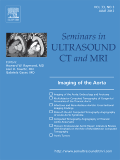
SEMINARS IN ULTRASOUND CT AND MRI
Advancing the Frontiers of Diagnostic ImagingSEMINARS IN ULTRASOUND CT AND MRI is a prestigious academic journal dedicated to advancing the fields of radiology, nuclear medicine, and imaging. Published by W B SAUNDERS CO-ELSEVIER INC, this journal has been a cornerstone of scholarly communication since 1984, providing a platform for high-quality research and review articles that enhance the understanding of diagnostic imaging techniques. With a current impact factor reflected in its Q3 quartile ranking among 333 journals in its category, it remains a valuable resource for researchers and clinicians alike. The journal's focus includes but is not limited to innovations in ultrasound, computed tomography, and magnetic resonance imaging, making it essential for professionals looking to stay at the forefront of imaging science. While it operates under a subscription model, its extensive archive of influential articles ensures ongoing access to critical knowledge and developments in the field. With a commitment to quality and relevance, SEMINARS IN ULTRASOUND CT AND MRI continues to contribute significantly to the evolving landscape of medical imaging.

SEMINARS IN ROENTGENOLOGY
Illuminating Radiology Through Scholarly DiscourseSEMINARS IN ROENTGENOLOGY is a revered journal dedicated to the dynamic fields of Radiology, Nuclear Medicine, and Imaging, published by W B SAUNDERS CO-ELSEVIER INC. With a legacy spanning from 1966 to 2024, this journal provides a platform for comprehensive review articles that foster scholarly discussion and advancement in diagnostic imaging techniques and methodologies. Although currently not an open access publication, SEMINARS IN ROENTGENOLOGY holds significant relevance within its field, reflected by its inclusion in the Q4 category in the latest 2023 Journal Rankings and its position in the 20th percentile among its peers. This journal appeals widely to researchers, professionals, and students aiming to enhance their knowledge and contribute to the evolving landscape of radiologic science. Notable for its informative content and expert insights, SEMINARS IN ROENTGENOLOGY continues to serve as an essential resource for those committed to advancing clinical practice and research in radiology.
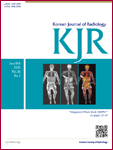
KOREAN JOURNAL OF RADIOLOGY
Empowering the Global Radiology CommunityKorean Journal of Radiology (ISSN: 1229-6929, E-ISSN: 2005-8330), published by the Korean Society of Radiology, stands as a leading international platform for the dissemination of high-quality research and advancements in the fields of radiology, nuclear medicine, and imaging. With a remarkable impact factor and ranked in the Q1 quadrant in its category, this journal showcases cutting-edge studies, clinical investigations, and comprehensive reviews that significantly contribute to the understanding and practice of medical imaging. Researchers, clinicians, and students alike will find the journal an invaluable resource, featuring innovative methodologies, case studies, and essential updates in imaging technology. Since its inception in 2000 and continuing through 2024, the Korean Journal of Radiology remains dedicated to promoting excellence and fostering collaborative research within the global radiology community, underscoring the importance of imaging in modern medicine.
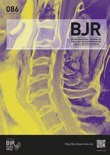
BRITISH JOURNAL OF RADIOLOGY
Shaping the Future of Imaging through Rigorous ResearchBritish Journal of Radiology is a leading peer-reviewed journal published by the British Institute of Radiology, dedicated to advancing the field of radiology, nuclear medicine, and imaging. With a prestigious history dating back to 1945, this journal is at the forefront of disseminating cutting-edge research and innovations that significantly impact clinical practice. Currently enjoying a Q1 ranking in the field of radiology and Q2 in general medicine for 2023, it is recognized for its rigorous standards and high-quality content, ranking #87 out of 333 in Scopus for specialties related to Medicine, Radiology, Nuclear Medicine, and Imaging, placing it in the 74th percentile. Researchers, professionals, and students are encouraged to engage with the latest findings and comprehensive reviews presented within its pages, which contribute not only to academic discourse but also to the evolution of practice in the wider medical community.
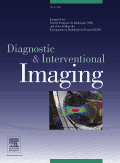
Diagnostic and Interventional Imaging
Unveiling Cutting-Edge Discoveries in Imaging ScienceDiagnostic and Interventional Imaging, published by Elsevier Masson, stands as a prominent journal in the fields of Radiology, Nuclear Medicine, and Imaging. With a significant impact factor and a reputation for high-quality research, this journal is dedicated to advancing the understanding and application of diagnostic and interventional imaging techniques. It has achieved an impressive Q1 ranking across multiple categories including Medicine (miscellaneous) and Radiological and Ultrasound Technology, demonstrating its esteemed position within the academic community. The journal features cutting-edge studies and reviews, reflecting the latest innovations and practices from 2012 to 2024. Researchers, healthcare professionals, and students alike can look forward to accessing valuable insights that drive forward the discipline and improve patient outcomes, as evidenced by its robust Scopus rankings placing it among the top journals in its domain.

SA Journal of Radiology
Innovative Imaging: Pioneering Research in RadiologyThe SA Journal of Radiology is a prominent open-access journal published by AOSIS, dedicated to advancing knowledge in the fields of Radiology and Ultrasound Technology. Established in 2004, this South African journal provides a platform for researchers, professionals, and students to disseminate valuable findings and share innovative practices in medical imaging. With an ISSN of 1027-202X and an E-ISSN of 2078-6778, the journal has become an important resource for those involved in radiological sciences, despite currently holding a Q4 ranking in both Radiological and Ultrasound Technology and Radiology, Nuclear Medicine and Imaging categories. Covering a converged time span from 2014 to 2024, the journal aims to promote scholarly communication and enhance the accessibility of research, positioning itself as a key player in the global radiological community. In a landscape where open access is increasingly critical, the SA Journal of Radiology is committed to fostering research collaboration and facilitating the exchange of ideas among clinicians and academics alike.
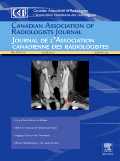
CANADIAN ASSOCIATION OF RADIOLOGISTS JOURNAL-JOURNAL DE L ASSOCIATION CANADIENNE DES RADIOLOGISTES
Elevating Knowledge: Your Gateway to Radiological ExcellenceCanadian Association of Radiologists Journal - Journal de l'Association Canadienne des Radiologistes, published by SAGE Publications Inc, stands as a vital resource in the realms of Radiology and Medicine. With an ISSN of 0846-5371 and an E-ISSN of 1488-2361, this esteemed journal offers insightful research articles and reviews that contribute to the advancement and practice of radiology, benefiting both seasoned professionals and emerging scholars. Holding a commendable Q2 ranking in both the fields of Medicine (miscellaneous) and Radiology, Nuclear Medicine and Imaging, the journal is recognized for its impactful publications, positioning its content within the top 40% of global research outputs. Since its inception in 1973 and continuing through to 2024, it has consistently provided a platform for cutting-edge research and clinical innovations, facilitating knowledge transfer among practitioners and educators. The journal’s significant influence is evidenced by its Scopus rank of #67 out of 333 in its category, placing it in the 80th percentile of academic excellence. Although it does not offer open access, its contributions are critical for advancing the field, making it essential reading for all those invested in the evolution of radiological sciences.

EUROPEAN JOURNAL OF RADIOLOGY
Advancing Imaging Excellence in HealthcareThe European Journal of Radiology, published by Elsevier Ireland Ltd, is a premier peer-reviewed journal in the fields of radiology, nuclear medicine, and imaging. Established in 1981, it has carved a significant niche within the academic community, showcasing innovative research that enhances medical imaging practices and improves patient care. With an impressive ranking in the Q1 category for both Medicine (miscellaneous) and Radiology, Nuclear Medicine, and Imaging in 2023, the journal is recognized globally for its commitment to advancing scientific knowledge and improving imaging methodologies. The journal's Scopus ranking of #60/333, placing it in the 82nd percentile, underlines its reputation for high-quality research and scholarly contributions. While traditionally a subscription-based journal, it continually evolves to meet the demands of the academic landscape, aiming to bridge the gap between research and clinical practice. Researchers, healthcare professionals, and students alike can benefit from exploring its extensive archives and current publications, which are curated to foster education and innovation in the medical imaging domain.
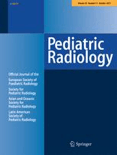
PEDIATRIC RADIOLOGY
Empowering clinicians through cutting-edge research.Pediatric Radiology is a leading journal published by Springer that provides a crucial platform for the dissemination of research in the fields of pediatrics, perinatology, and radiology. Since its inception in 1973, the journal has continually contributed to the advancement of medical imaging techniques and their application in diagnosing and treating pediatric conditions. With its impact factor reflecting a Q2 ranking in both Pediatrics and Radiology categories as of 2023, Pediatric Radiology is highly regarded in scholarly circles, aiding researchers, clinicians, and students to stay at the forefront of innovations and findings in the field. Although the journal does not offer open access, it continues to be an essential resource for evidence-based information that enhances clinical practice and improves health outcomes for children globally. The journal's reach is further established through its solid Scopus rankings, indicating its relevance and influence in the global medical community.